Multiple people have asked me in the last couple of weeks when their true yams are going to emerge from the soil.
One woman was concerned that her yams might have died in the ground.
After the brutal cold we got in the Deep South during December, that might be possible. But, probably not. Yams are really good at staying alive.
Another thing to remember about yams: they have a timer built in, meaning there’s a dormancy period that has to end before they feel like waking up. April is usually when they make shoots.
Though we got a night that hit 16 degrees here in zone 8b, this week, right on schedule, we’re seeing the first yam shoots emerge from the ground. They lived!
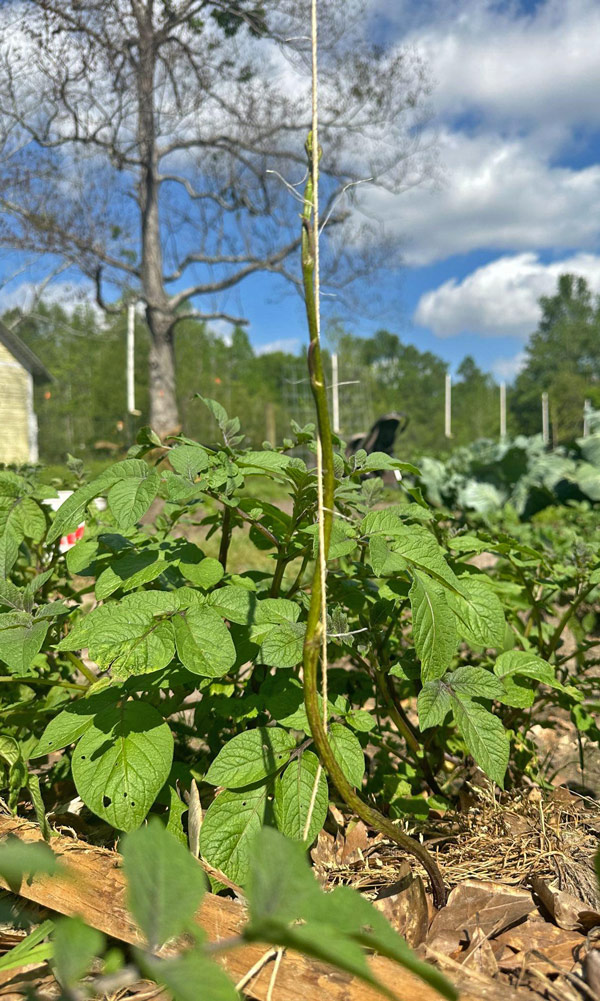
This one is a Dioscorea alata, coming up amidst the Adirondack blue potatoes we planted in the long yam bed.
You can see the 1-minute video here.
We ran strings for the yams this morning. The goal is to get a yield of potatoes early in the year, with the yams coming much later in December. This way the bed gets double duty. After the potatoes are pulled, I might also plant beans in the mound, giving us a third yield as well as some nitrogen for the yams.
Another variety of D. alata is now coming up in the Grocery Row Gardens.
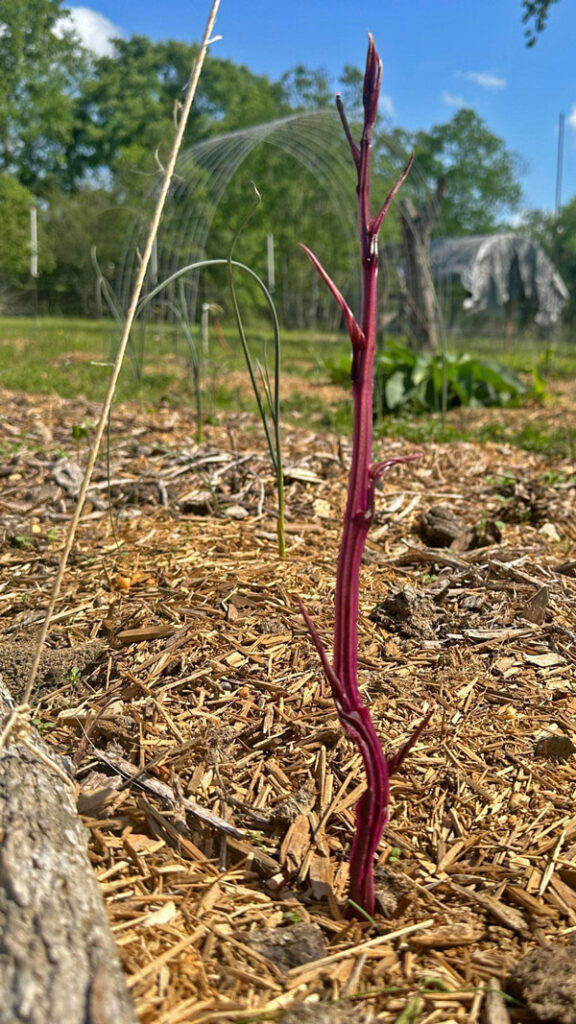
This is a purple “ube” yam. We planted about a dozen of these, and two have awakened thus far.
You can see it in situ in this photo:
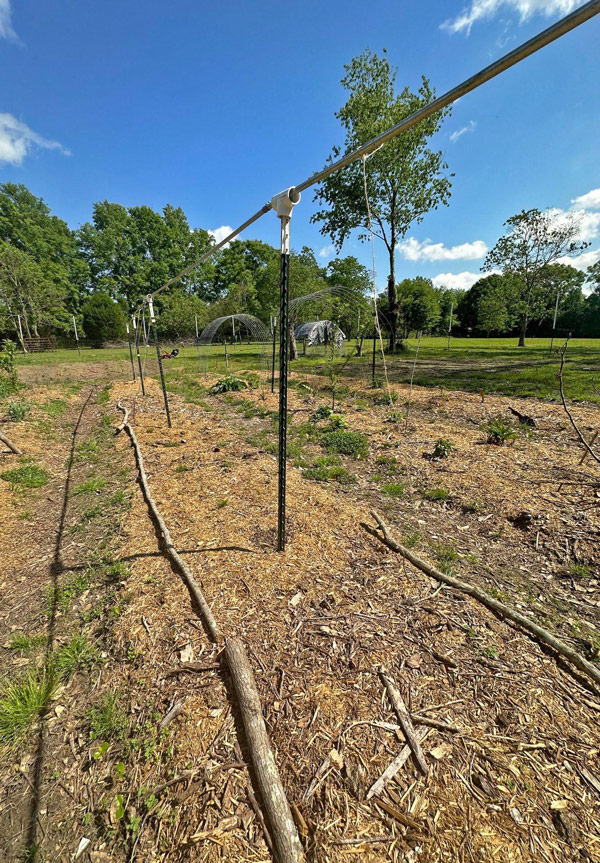
Do you see the purple shoot? It’s there!
No?
How about now?
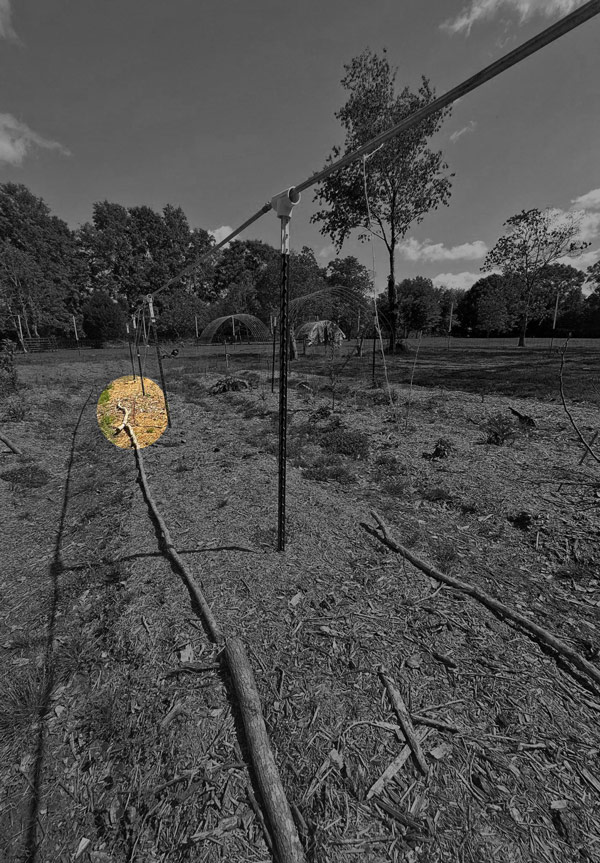
One little purple shoot, reaching for the sunlight.
This year we’re clearing popcorn trees from our woods and using the felled saplings for various projects. In this case, we put them on the ground to hold jute twine which is then tied to the top rail of the “trellis to make you jealous” that is running through this part of the Grocery Row Gardens.
As we didn’t have enough space for all the yams we wanted to plant in the fall, we took one of the beds we tilled up as a Grocery Row and instead of planting it with trees, shrubs, perennials and flowers, we dedicated it to yams, putting a row of yam roots and bulbils in the ground on either side of the trellis. As they emerge, we’ll run strings so they can climb to the top. It will be epic when it’s totally covered. We’re not sure if the trellis will take all this weight, but we’ll see. It might need intermediary T-posts.
We used to start a bunch of yam pieces in pots, then transplant out the ones that started growing. Like this. A couple months later, the potted pieces looked like this:
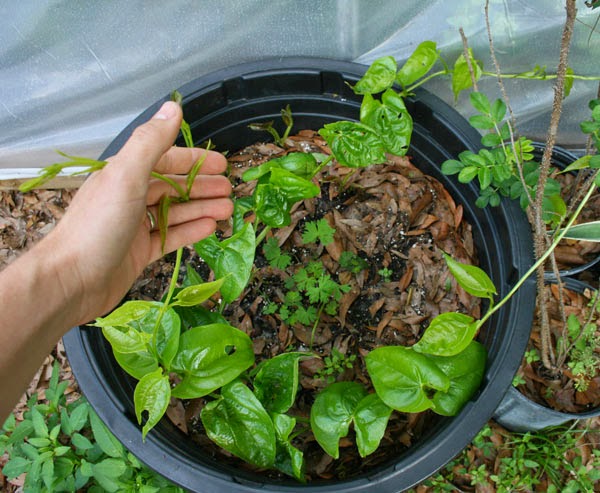
Now, after years of seeing them grow just from chunks put in the ground in the fall and winter, we don’t bother starting them in a pot anymore. We might if we had a rare variety, but now we trust them in the soil.
And this spring has showed us that even when we hit 16 degrees below freezing, AND we had two days that never went above 32 degrees, tropical yams could still survive.
I’m glad. I’d hate to give them up.


3 comments
Love your books and videos. How do I support you?
My books are mostly it. And you can always share my posts and videos with friends. Thank you, Denise.
I love his books too. I read Florida Survival Gardening every night even though I read it over about 2 dozen times at this point and Free Plants for Everyone is used as a reference book about twice a week. I have 2 others as well that I occasionally go over for a review. I hope to buy more in the future.
Comments are closed.